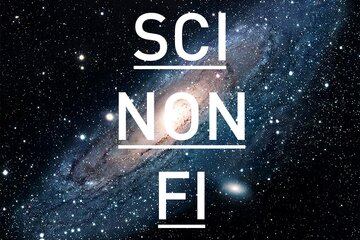By Adelle Rodda
A couple of weeks ago an email with the subject heading “Ripples detected in the fabric of space-time” popped into my inbox. If the email hadn’t been from a science news website I subscribe to I would have dismissed it as spam.
Although the sentence reads like it’s straight out of Captain Kirk’s mouth, it is actual science, not science fiction. Ripples in space-time are real and it’s got every physicist, nerd, and Trekkie worth their salt very, very excited.
So what’s all the fuss about?
The discovery, if found correct, proves that yet again Einstein is always right and it brings science one-step closer to discovering how it all began – the Universe that is.
Most of you will be familiar with or have at least heard of the Big Bang theory – the science one, not the television series – which proposes that our Universe burst into existence almost 14 billion years ago and has been expanding ever since. This idea that our now stupefyingly large Universe was once stupefyingly small is known as Inflation Theory. And it was just a theory, until astrophysicists from Harvard announced a fortnight ago (March 17) they had detected ripples, or more scientifically “gravitational waves” in space.
The discovery, which is on par with the recent Higgs Boson finding, is direct evidence that the Big Bang and Inflation theories are much more than just theories.
Normal physics is downright confusing but astrophysics is absolutely mind-melting. However, having a basic grasp on how the Universe began is not only useful for impressing people at social gatherings, it’s actually just a fascinating story.
So in this week and next week’s – to save your brain, and mine, from melting into a heap on the floor – sci non fi we are going to start at the very beginning, of everything.
The Big Bang
It might be impossible to imagine but in the beginning – around 13.8 billion years ago – the entire contents of the Universe was condensed into a tiny, insanely hot, singular point of pure energy – millions of times smaller than the size of this full stop.
Then, after being in existence for a less than a trillionth of a second, our little hot spot Universe had an enormous growth spurt. Space began expanding faster than the speed of light and the Universe rapidly swelled in size, from smaller than an atom to the size of a tennis ball in less than the blink of an eye, which might not seem all that impressive but if you scale it up for comparison it’s like an m&m growing to the size of a galaxy almost instantaneously.
After this brief growth spurt – aka inflation period – was over the Universe continued to expand, albeit a bit slower, and as it expanded it began to cool allowing energy to be transformed into matter – matter is really just frozen energy – creating subatomic particles, like quarks, leptons, electrons, and their antiparticles – which are like smoking, leather jacket-wearing, evil twins. The forces that govern nature – gravity, electromagnetic, the strong and weak forces – also became apparent.
Three minutes after our Universe was born, protons and neutrons joined together forming nuclei. It would then take another 300,000 years for electrons to join the party and team up with nuclei to make atoms.
After 100 million years the first galaxies came to be and heavier atoms from carbon through to iron were created in the nuclear-reactor hearts of stars and then flung out through space during massive supernovae – the explosive death of stars.
Eventually our sun, then solar system came into existence, the first life crawled out of the primordial soup and here we are today.
So that, in a nutshell, is the Big Bang and Inflation. The Universe is still expanding from the Big Bang, but expanding into what you might ask? Well, and here’s the kicker, nothing. The Universe is just expanding. There is nothing outside the Universe. There is only Universe.
And I think that is probably a good place to end this first instalment of the Big Bang. Tune in next week, where we get to learn about crazy things like ripples in space-time.












Comments